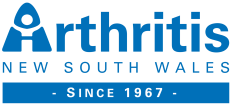Living with pain can be one of the hardest parts of having arthritis. It’s important to understand the pain cycle and learn techniques that may help you cope with pain. It is also important to not solely rely on medications alone to manage your pain, the best results are when several self-management techniques are used in combination.
What causes pain
Arthritis pain can be caused by:
- inflammation, the process that causes heat and swelling in your joints
- damage to the joints
- muscle tension, from trying to protect joints from painful movements.
The pain cycle
Pain, stress, fatigue (tiredness) and depression all affect each other. For example, people who feel depressed or anxious have been found to be more sensitive to pain. This can make your pain feel worse, which can lead to a continuing cycle of fatigue and depression.
The good news is that this pain cycle can be broken by using some of the strategies described below.
Watch this video to learn more about pain: Understanding Pain in less than 5 minutes, and what to do about it!
What can I do to manage my pain?
Pain may limit some of the things you do, but it doesn’t have to control your life. Your mind plays an important role in how you feel pain. Thinking of pain as a signal to take positive action rather than being scared or worried about it can be helpful. Also you can learn ways to manage your pain. What works for one person may not work for another, so you may have to try different techniques until you find what works best for you. There may not be a cure for your pain but you can learn to manage it.
Here are some things you can try:
- Take medicines wisely
Many different types of medicines can help control the pain of arthritis. Your doctor or pharmacist can help you understand which medicines are right for you and how best to use them. See the Medicines & Arthritis information sheet. Also visit the NPS Medicinewise website for further information (see link below).
- Exercise
Research has shown that regular appropriate physical activity can help reduce pain. It also keeps your joints moving, strengthens muscles to support your joints, reduces stress and improves sleep. A health professional (e.g. a physiotherapist or exercise physiologist) or your doctor can help you work out a program suitable for you.
- GP Management Plan
A GP Management Plan can help people with chronic pain. If you want to take charge of your pain management, find a supportive GP who can coordinate your care with a Medicare-funded care plan, which will allow you access to a rebate for treatment from an allied health professional, such as a physiotherapist or psychologist (see below). There may also be an opportunity to be referred to a pain clinic. Note that while Medicare provides a rebate for the preparation of a Chronic Disease Management Plan and a Team Care Arrangement, there may be a gap you are required to pay.
- Seeing a Psychologist
A psychologist, can help you learn pain coping skills so you can better manage your pain, using techniques such as behavioural cognitive therapy (CBT). Ask your doctor about a referral.
- Use heat and cold
The benefits of heat and cold for arthritis are yet to be proven by research. However these treatments are soothing and safe when used carefully. Heat relaxes your muscles and stimulates blood circulation. You could try a warm bath, or place a heat pack or hot water bottle over the painful area for 15 minutes. Cold numbs the painful area and reduces swelling. Applying cold treatments, such as ice packs, to the painful area for 15 minutes may be especially useful for hot, swollen joints, such as during a ‘flare’. You can repeat heat or cold treatments throughout the day. Make sure the temperature of your skin has returned to normal before re-applying, to prevent any tissue damage. Ask your doctor or physiotherapist whether heat or cold is best for you.
- Take care of your joints and save energy
Looking after your joints during your daily activities can help reduce pain, stress and tiredness. It involves simple habits such as: – avoiding activities that cause pain – asking for help when you need it – using special aids and gadgets to make tasks easier. See the Fatigue & Arthritis information sheet.
- Massage
There are limited scientific studies that show massage may temporarily improve pain and mobility of joints and muscles. Make sure the massage therapist has experience working with people who have arthritis. See the Massage & Arthritis information sheet.
- Transcutaneous electrical nerve stimulation (TENS). A TENS machine applies very mild electric pulses to block pain messages going from the painful area to your brain. TENS can be useful for longer-term pain but does not work for all people. See a physiotherapist to trial a TENS machine, and to learn how to use it correctly, before you buy one.
- Mind techniques Relaxation techniques, such as deep breathing, guided meditation and progressive muscle relaxation, can help you reduce stress and muscle tension. These techniques need to be practised and you may have to try several methods before you find one that works for you. You may find it helpful to use recordings, apps and books to help you learn relaxation techniques. You could also join a meditation group in your area.
Contact us on 02 9857 3300 for more information on self-management of your pain. You can also learn more from several online resources below.
Further Reading
Arthritis NSW – Dealing with Pain (Printable Sheet)
NPS Medicinewise – Chronic Pain
Arthritis Foundation – Chronic Pain & Arthritis
Versus Arthritis – Managing your Pain
Pain Australia – Self Managing Chronic Pain Face Sheet
Healthline – Managing Arthritic Pain

